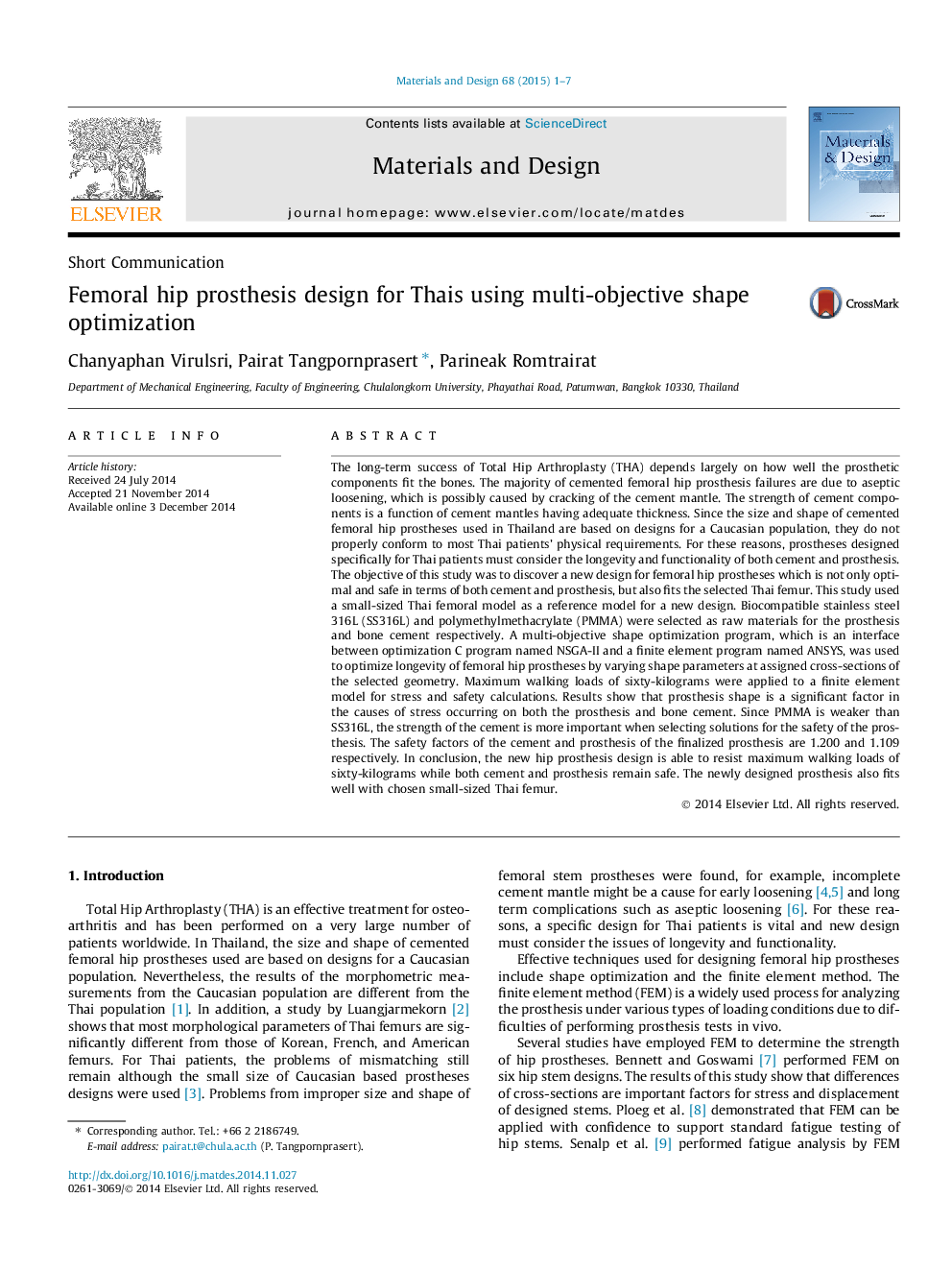| کد مقاله | کد نشریه | سال انتشار | مقاله انگلیسی | نسخه تمام متن |
|---|---|---|---|---|
| 828713 | 1470329 | 2015 | 7 صفحه PDF | دانلود رایگان |
• A multi-objective shape optimization was proposed to design hip prosthesis for Thais.
• The prosthesis design was optimized in terms of safety of both cement and prosthesis.
• The objective functions used the Soderberg fatigue strength formulations.
• Safety factors of the cement and prosthesis are 1.200 and 1.109 respectively.
• The newly designed prosthesis also fits well with chosen small-sized Thai femurs.
The long-term success of Total Hip Arthroplasty (THA) depends largely on how well the prosthetic components fit the bones. The majority of cemented femoral hip prosthesis failures are due to aseptic loosening, which is possibly caused by cracking of the cement mantle. The strength of cement components is a function of cement mantles having adequate thickness. Since the size and shape of cemented femoral hip prostheses used in Thailand are based on designs for a Caucasian population, they do not properly conform to most Thai patients’ physical requirements. For these reasons, prostheses designed specifically for Thai patients must consider the longevity and functionality of both cement and prosthesis. The objective of this study was to discover a new design for femoral hip prostheses which is not only optimal and safe in terms of both cement and prosthesis, but also fits the selected Thai femur. This study used a small-sized Thai femoral model as a reference model for a new design. Biocompatible stainless steel 316L (SS316L) and polymethylmethacrylate (PMMA) were selected as raw materials for the prosthesis and bone cement respectively. A multi-objective shape optimization program, which is an interface between optimization C program named NSGA-II and a finite element program named ANSYS, was used to optimize longevity of femoral hip prostheses by varying shape parameters at assigned cross-sections of the selected geometry. Maximum walking loads of sixty-kilograms were applied to a finite element model for stress and safety calculations. Results show that prosthesis shape is a significant factor in the causes of stress occurring on both the prosthesis and bone cement. Since PMMA is weaker than SS316L, the strength of the cement is more important when selecting solutions for the safety of the prosthesis. The safety factors of the cement and prosthesis of the finalized prosthesis are 1.200 and 1.109 respectively. In conclusion, the new hip prosthesis design is able to resist maximum walking loads of sixty-kilograms while both cement and prosthesis remain safe. The newly designed prosthesis also fits well with chosen small-sized Thai femur.
Journal: Materials & Design - Volume 68, 5 March 2015, Pages 1–7
